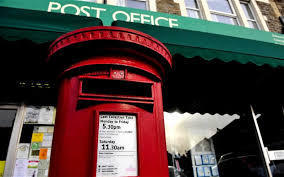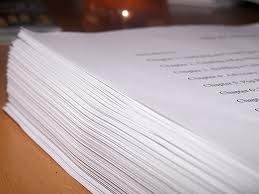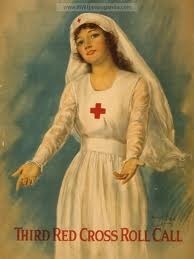How I cut a hundred pages from The Flyer
Last time I posted, I got a little sidetracked. I’ve been talking about gettin g The Flyer ready to send out to agents, and how the version on this website is about a hundred pages too long for the publishing industry. See previous posts for the rationale. The sidetrack I took was to talk about designing an ad for Goodreads, targeted towards readers of authors I thought my work is comparable to. Well, it’s true I was designing an ad, which is now running, but I have a confession to make. Part of the reason I wrote about it was to see if somehow, through the labyrinth of SEO, I could get more people to visit my site by mentioning Nicholas Sparks. My web designer said it wouldn’t work. I respect her views because she knows about this stuff and I just don’t. She had to tell me what SEO means. It’s an acronym for Search Engine Optimization, which is the means by which people stumble across a webpage. Except using SEO there’s no stumbling involved. Theoretically. It’s about getting people to your site. Anyway, did it work? Hmmmm. Yes and no. Or to be more accurate, I have no idea. My site visits did jump a couple of days later but I wouldn’t say it was conclusive. We’re not talking thousands here. As for the ad, early days yet, but I did one for Snow Falcon and that did work, I just don’t know to what degree. Did I break even? Hmmmm. Don’t know that either. I’ll have to keep testing.
g The Flyer ready to send out to agents, and how the version on this website is about a hundred pages too long for the publishing industry. See previous posts for the rationale. The sidetrack I took was to talk about designing an ad for Goodreads, targeted towards readers of authors I thought my work is comparable to. Well, it’s true I was designing an ad, which is now running, but I have a confession to make. Part of the reason I wrote about it was to see if somehow, through the labyrinth of SEO, I could get more people to visit my site by mentioning Nicholas Sparks. My web designer said it wouldn’t work. I respect her views because she knows about this stuff and I just don’t. She had to tell me what SEO means. It’s an acronym for Search Engine Optimization, which is the means by which people stumble across a webpage. Except using SEO there’s no stumbling involved. Theoretically. It’s about getting people to your site. Anyway, did it work? Hmmmm. Yes and no. Or to be more accurate, I have no idea. My site visits did jump a couple of days later but I wouldn’t say it was conclusive. We’re not talking thousands here. As for the ad, early days yet, but I did one for Snow Falcon and that did work, I just don’t know to what degree. Did I break even? Hmmmm. Don’t know that either. I’ll have to keep testing.
So, back to editing The Flyer. The first 100 pages of the novel concerns William’s early life up  to the point where he meets the other main characters. When I wrote the story, his early life was essential, in my mind, to creating a fully formed character the reader could identify with. The Flyer could be described as a love story, but it is much more than that. In the second half, where the story moves to France against the backdrop of the first war to be fought in the air, the focus remains on the relationships between the characters, but the setting provides elements of danger and action too. My overriding goal from the beginning was always to write about William. I wanted to portray him as a strong character who overcomes repeated adversity, but who is affected by the events of his life. I saw him as lonely and emotionally distant, though always acting from the conflict that arises from his deep-seated desire to be loved and to belong and the fact that the people he cares about most represent the very kinds of people he has struggled against all of his life. My problem was that if I cut the first 100 pages, all the events that show how William
to the point where he meets the other main characters. When I wrote the story, his early life was essential, in my mind, to creating a fully formed character the reader could identify with. The Flyer could be described as a love story, but it is much more than that. In the second half, where the story moves to France against the backdrop of the first war to be fought in the air, the focus remains on the relationships between the characters, but the setting provides elements of danger and action too. My overriding goal from the beginning was always to write about William. I wanted to portray him as a strong character who overcomes repeated adversity, but who is affected by the events of his life. I saw him as lonely and emotionally distant, though always acting from the conflict that arises from his deep-seated desire to be loved and to belong and the fact that the people he cares about most represent the very kinds of people he has struggled against all of his life. My problem was that if I cut the first 100 pages, all the events that show how William  became the person he is are lost. How could I do that?
became the person he is are lost. How could I do that?
In the end, I had no choice, so the only course open to me was to re-insert William’s early life back into the narrative, but in small pieces either in conversation or as brief flash-backs. It wasn’t easy to do. I had to be mindful of the word-count otherwise I would be defeating the object of the exercise, but at the same time I had to try very hard to make certain that William remained a sympathetic character. The reader has to identify with his struggle and understand his underlying motivations for the story to work. I think that I achieved the result I wanted, which begs the question of whether the pages I cut were needed in the first place? Was this perhaps a case of killing my darlings, as I write about in another post, in the sense that it was editing the story had always needed?
In my view, the answer is no. I think the long version is the better one. Feedback from readers so far has been amazing, and they have all read the long version, so perhaps they would agree.
Which brings me to a plea. If you do read one of my books and like it, please consider posting a review on Amazon or Kobo or Goodreads or wherever. Writers need reviews. Thanks.



